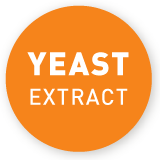With the help of modern genetic analysis techniques, a Belgian research team has proved that the many thousands of strains of Saccharomyces cerevisiae – the most commonly used cultured yeast in modern-day food and beverages production – can be traced back to five subgroups that were domesticated as early as the 16th century. This means that the food ingredient yeast extract, which itself has a 100-year-old tradition, is directly linked to the beginnings of yeast cultivation.
For centuries, yeasts have been an important constituent in the production of food and beverages. Admittedly, it was not until the late 19th century that it became technically possible to grow new yeast cultures in a targeted fashion. However, according to the Belgian researchers, the domestication of present-day yeast strains – including those used in the production of yeast extract – started back in the 1570s. The question is how this early yeast selection came about at a time when the existence of microorganisms such as yeasts had not yet been recognised. Beer brewers and bakers had noticed that they could speed up the fermentation process and make it more consistent by adding a small portion of a fermented product – dough or brew – to the next batch. This, along with the increasingly professional production methods deployed in large businesses, led to the development of yeast strains that were largely isolated from the wild yeasts found in nature and hence demonstrated special characteristics.



